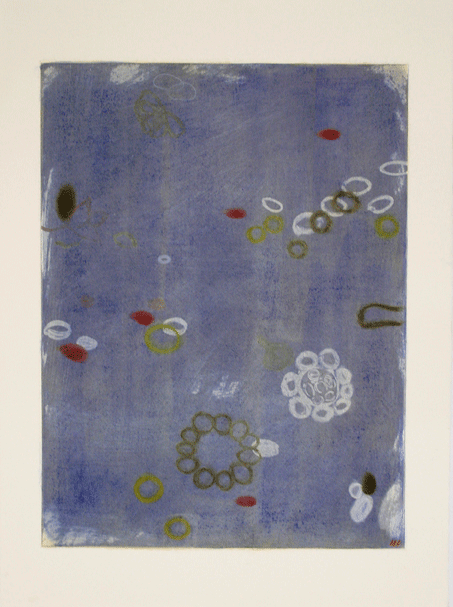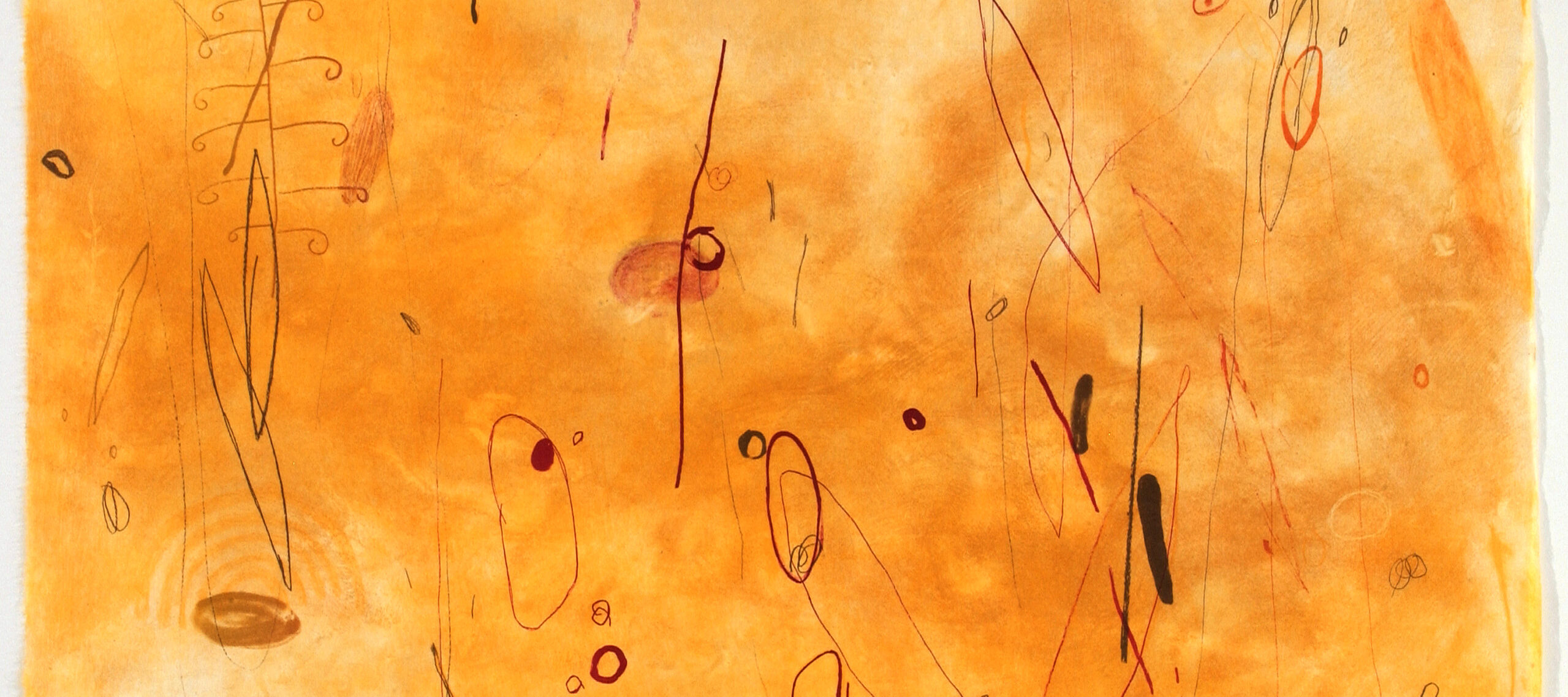Emmi Whitehorse’s artworks illustrate a landscape over time, her relationship to nature, and her view that “the act of making art must stay true to a harmonious balance of beauty, nature, humanity, and the whole universe”—a Navajo philosophy. Two pieces by Whitehorse, Floraux I and Floraux II, are featured in NMWA’s current exhibition, Pressing Ideas: Fifty Years of Women’s Lithographs from Tamarind, on view through October 2.

Whitehorse’s work has been shown in solo and group exhibitions across the country and abroad. As a member of the Navajo Nation and a New Mexico resident, Whitehorse is dedicated to depicting the landscape of the U.S. Southwest. Whitehorse received her BA in 1980 and MA in 1982 from the University of New Mexico, she studied both printmaking and art history. She created Floraux I and Floraux II at the Tamarind Institute in 2010. The Tamarind Institute is dedicated to teaching and showcasing the art of lithography, and Pressing Ideas displays a variety of the type of work that the institute supports.
Whitehorse’s two works are distinctive in this exhibition because they are monotypes rather than lithographs: this means that the image is created entirely on one flat surface and only one impression is taken. Floraux I and Floraux II have very similar compositions, differing mainly in color—one is primarily a dusty blue, the other a bright, spring green. These images of nature reflect calm and peace. Both Floraux I and Floraux II are meant to be viewed slowly. Her pieces reflect both change and continuity of land over time, and viewers experience the subtle changes of the landscape when examining the piece at length, in a process that Whitehorse intended to create a meditative experience. The intricate symbols shown in these works refer to certain plants, people, and Whitehorse’s personal experiences.

The philosophy behind Whitehorse’s artwork is deliberately apolitical: her works are dedicated to the land, being aware of one’s surroundings, and appreciating nature. She is concerned that society is losing this awareness, and uses the calm and beauty of her work to remind her viewers of the exchanges we make with nature.
To listen to a description of Emmi Whitehorse’s works by Marjorie Devon, director of the Tamarind Institute, and find out more about Whitehorse’s background, click here.
Visit NMWA to see Emmi Whitehorse’s Floraux I and Floraux II, along with other works featured in the current exhibition, Pressing Ideas: Fifty Years of Women’s Lithographs from Tamarind, on view through October 2, 2011.
For more information on Emmi Whitehorse, visit http://www.ewhitehorse.com/.
